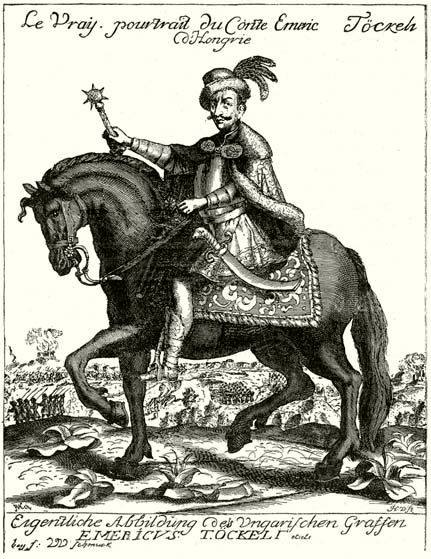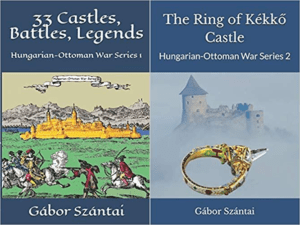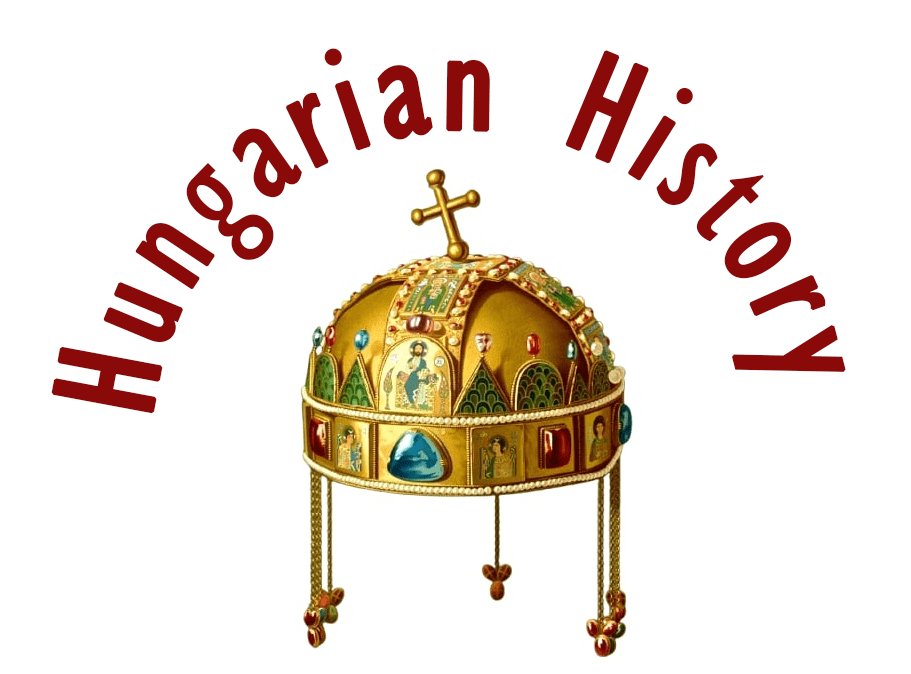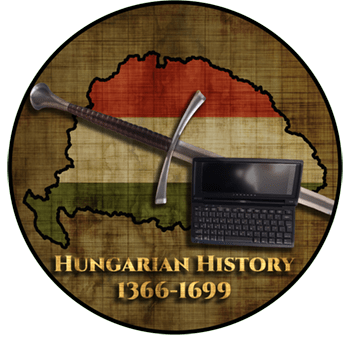Petneházy Dávid, the leader of the Battle of Szikszó, came from an ancient landowning family in Szabolcs County, but his ancestors were mostly involved in the public life of their county. His father, János, must have been a soldier in the Borderland.

He must have been born around 1645, the only child of his parents to reach adulthood. His letters, beautifully written and full of Latin phrases, suggest an educated man. He may have been a student at the famous Reformed College in Debrecen.
It is not known when and how he ended up among the fugitives after the suppression of the Wesselényi Movement. Despite being a Protestant, at first, he did not flee but stayed at home, married, and had a daughter.
When Thököly Imre’s star began to rise in the Kuruc movement in 1677-78, Petneházy was already on his side. He played a significant role in the victory at Szikszó-Újfalu in the autumn of 1679.
The Battle of Szikszó on 3 November 1679
The successes of 1678, when the army of exiles had conquered all of Upper Hungary, down to the Mining Towns, forced the Viennese court to compromise. They concluded a truce with the rebels and acknowledged their presence and encampment in the northeastern counties.
Although Thököly initially relied on French support, King Louis XIV of France and the Habsburgs concluded a peace treaty in early 1679. The rebels could now only look to the Turkish Porte for guidance and support. Neither the Kuruc nor the Imperials respected the truce, and for the former, the power struggle between Thököly and Wesselényi Pál led to renewed fighting, as both leaders sought to strengthen their positions by increasing their glory.

Subsequently, in August 1679, with the help of Transylvanian and Turkish aid, the rebels launched an attack and captured Kálló. However, the Transylvanians then retreated home, while Thököly continued the military campaign. He set up camp in Gyöngyös, as the roads and passes leading to the Mining Towns were blocked by the Imperials. In October, he raided Putnok and then retreated to Jászberény. This was followed by the battle of Szikszó, a fine example of the classic trap laid by the Hajdú soldiers.
Thököly got the news, but the Imperial commander of Sárospatak, de la Borde, set off with his soldiers to secure the vine harvest in the Hegyalja region. With about 2,200 soldiers, he set out against him in a forced march, they did not rest at night, they crossed the flooded river Sajó quickly, and arrived at Újfalu near Szikszó at dawn on 3 November. De la Borde’s army camped at Dobsa, was stronger than he had originally known.

The Kuruc main army was hidden between the vineyards of Szikszó and Újfalu, and 400 horsemen led by Szűcs János and Petneházy Dávid were sent forward to Aszaló as bait. Here, Colonel Gersdorf’s detachment of 150 men arrived to gather food. The Kuruc began to “flirt” with the Imperial troops, who pursued them. The enemy, who had moved out of the camp, gave chase, and the Kuruc, feigning flight, lured the Imperials into the place where the rest of the army was hiding. Several times during the run they stopped, ” firing their rifles in column”, and then again “turning their backs” on the enemy.
Seeing this, the Imperials formed up in battle formation and fired their rifles at the Kuruc. Then, the bulk of the Kuruc army advanced from the hiding place, “we were only going at them from all sides with speedy resolute”, wrote Thököly. The Imperial troops fled, and the Kuruc pursued and cut them down. Many were lost in the river Hernád. About 500 Imperial soldiers fell, the Kuruc lost a total of 10 dead and 20 wounded. Shortly afterward, the soldiers of Petneházy took an entire German squadron of 100 men prisoner at Ungvár.

Thököly reported the event himself, “We killed and slaughtered them all, we captured all the officers and troops so badly that hardly twenty-five of them could go to the camp as messengers; as I have learned, no more than one officer could escape, they were all lost in the battle.” After the victory, many weapons were captured, an abundance of rifles, 500 pairs of pistols, many carbines and “dragon rifles”.
The leader wrote enthusiastically to the Transylvanian Chancellor Teleki Mihály about how the German prisoners were amazed at their speed and their courage. Walter Leslie, the General Captain of Upper Hungary, who had been ill for a long time, resigned on hearing of the failure and was replaced by General Carlo Strassoldo.
The victory at Szikszó was a major factor in the election of Thököly as the leader of the Kuruc congregation at Szoboszló on 8 January 1680. Thököly’s star began to rise.

Further military career
In the spring of 1681, he was already a captain of a thousand men (colonel) in Thököly’s council of war, which decided whether to accept or reject the reconciliation with the Habsburg court. Petneházy was in favor of refusing the truce with them. According to some sources, he captured the castle of Szatmár from the Imperials in a night raid.

In 1682, he and his troops blocked the road to Kassa and captured Imperial General Herberstein. In 1683, he led the vanguard of the Kuruc army advancing towards Vienna, in the Morava River valley.
He became an excellent raiding officer, adored by his soldiers. As a sign of his comradeship, in April 1685 he and his officers stood up for a comrade who was condemned to death. His courage is proven by a letter written in 1681, in which Görgei András reported from Ónod to Andrássy Miklós:
‘Petneházy came to the raid on the banks of the Tisza and spoke to Lord Semsey András, swearing by the whole holy trinity that they will stand the fight; they had better all perish to a single man so that they will not live as shamefully as they have done so far’. His valor was reported by others. Thököly gave him a house in Kassa as a reward.

In 1684 the prince ordered him to protect the county of Turóc. At the same time, he was not far from the violent actions often typical of the Kuruc soldiers, and in the spring of 1684 his soldiers “slaughtered” Debrecen merchants.
The Imperial command also tried to do everything possible to get him on their side, and his name was mentioned in an amnesty order issued in the summer of 1685. However, only the success of the Imperial arms and Thököly’s capture by the Turks led to his surrender in the autumn of that year with 3,000 soldiers.
He tried to prove his loyalty to the king, so he played an active role in the battles against both the Kuruc and the Turks. In the winter of 1685, he was already persuading the defenders of Kassa to surrender to the Imperials, and then he distinguished himself in the retaking of Szolnok, Szarvas, and Arad. King Leopold I sent him a gift himself on 14 January 1686, a gold necklace and a coin with his image. And despite his Protestantism, he also received a gold chain from the Pope.

By this time he was already living with his second wife, from whom he had two sons, Zsigmond and József. He applied to the emperor for a grant of land to care for them.
In 1686, he was ordered to the siege of Buda, or more precisely, as a raiding officer, he had to provide security between Hatvan and Pest with 2,000 men. He did not arrive at the siege camp until mid-August when he had to fight with the Grand Vizier’s relief army. He was then ordered to defend Pest on news of the Turkish-Crimean Tatar relief force, so he could not be present for the recapture of Buda Castle on 2 September. This is important because the chronicles of Cserei Mihály spread the belief that he was the first to place the flag on the castle walls.

“The prince, desiring to make a last siege, orders a breach on three sides, and with great preparation, they set out to besiege, though they were turned out of the city and beat back the Germans a few times. Seeing this, Petnehazi (who had formerly been captain of a thousand men to Thököly, but afterward was redeemed to the loyalty of the emperor), a man of renowned valor, with the Hungarian Hajdú troops, set out, and the Turk, unable to resist him, first of all with the Hungarians, ascended the stone walls and penetrated the city. The German generals, seeing his marvelous bravery, said to each other, “This Petnehazi is not a man, but a lion.”
The fact that it didn’t happen like this, does not diminish his role, as he played a prominent role in the success of the siege. In the fight, his army was reduced to 700 men.
The Viennese court then dealt with his land claim, but only his widow and sons were entitled to the grant. Petneházy must have died of some kind of rapidly progressing illness at the turn of 1686-87. Rumors soon spread that he had been poisoned by Imperial officers jealous of his valor, but this could not be proved.
His wife and younger son soon followed him to the grave.
Source: Szibler Gábor
Dear Readers, I can only make this content available through small donations or by selling my books or T-shirts:
Please, support me with a coffee here: https://www.buymeacoffee.com/duhoxoxa
You can check out my books on Amazon or Draft2Digital, they are available in hardcover, paperback, or ebook:
https://www.amazon.com/dp/198020490X or at https://books2read.com/b/boYd81

My work can also be followed and supported on Patreon: Become a Patron!http://Become a Patron!
Become a Patron! and donations can be sent by PayPal, too: https://tinyurl.com/yknsvbk7


https://hungarianottomanwars.myspreadshop.com/all
Subscribe to my newsletter: https://tinyurl.com/4jdjbfkn

